
We kindly inform you that, as long as the subject affiliation of our 300.000+ articles is in progress, you might get unsufficient or no results on your third level or second level search. In this case, please broaden your search criteria.


This paper investigates the sources of representations on the communist period and the type of engagement with the past in an experiential museum, in the context of the National Network of Romanian Museums’ project for a laboratory-museum of Romanian Communism. Our analysis of focus-groups in October-November 2012 explores the public’s expectations in terms of museum experience and engagement with objects and the potential of an experiential museum to facilitate deliberation about the past. We use the conceptual framework of recent studies on postmemory (Hirsch, 2008) and prosthetic memory (Landsberg, 2004, 2009) to focus on ways of building the experiential archive needed to produce prosthetic memory. We consider that such an analysis is relevant for two interconnected problems: the bidirectional relationship between a projected museum of communism and a prospective public, and the methodological insights available for investigating this relation. With regard to the first problem, this paper makes a case for treating museums as a memory device rather than a lieu de memoire and analyses the role of the museum in relation to cultural memory. With regard to the second problem, it offers an example of conducting research on prospective publics which departs from traditional marketing approaches, adopting theoretical insights and analytical categories from specific conceptualizations in the field of memory studies.
More...
This article addresses the contemporary issues and challenges of the international environment, from the perspective of geopolitics, and focuses on understanding how all these elements affect the states' sovereignty. Thereby, the two main research questions are the following: How the geopolitical context changed after the end of the Cold War? and What are the new meanings and dimensions of sovereignty within the international system? We considered analyzing the geopolitical context after the Cold War being given the fact that the aforementioned moment was the last one that changed profoundly the international structure. Also, we assume that the nature of state sovereignty has altered in the post-Cold War period in order to reflect new trends of a changing global society
More...
In 1954, Nikita Khrushchev was making the first step towards the normalization of the Soviet-Yugoslav relations, which intensified significantly between 1955 and 1956. And yet, in 1958, the two sides engaged in a sarcastic exchange of letters regarding the draft programme of the 7th Congress of the LCY. Relying on documents from the Romanian archives, the present paper is trying to illustrate the main ideological differences marking the abovementioned exchange of letters.
More...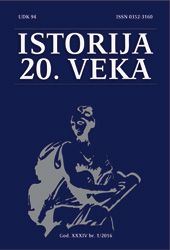
Slobodan Milošević started a wide political campaign in the late fall of 1987 in order to politically eliminate Ivan Stambolić. Even after the Eighth Session Milošević wanted to send a clear message to all of his adversaries – he is the absolute leader of the Serbian communist party and the Serbian nation. To that end he evoked the necessity of the „unity of socialist forces“ in order for the Serbian society to quickly emerge from a political, economic and moral crisis. At the same time, he was creating an image of himself as a man of action that doesn’t hesitate and does not waste time making „useless“ conversations. Through a well organized political action, Ivan Stambolić was removed from the most important state function in Serbia, and by doing so Milošević suffocated every opposition inside the Serbian communist party. As a leader, his offer was similar to Tito’s: egalitarianism, a simplified picture of the world and how it works, a new religion (belonging to a class was replaced by belonging to the nation), and – a vision of a common enemy. Dangerous channel was opened for collective venting of frustrations of the people. First among such enemies were „the forces defeated in the Eighth session“ and Serbian „bureaucrats and officials“, then Albanians and politicians from Vojvodina, then the Croats and Slovenians, and finally wider range of threats within and outside Yugoslavia.
More...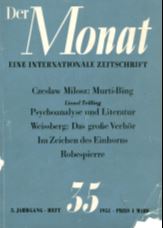

"The production of one of the great political melodramas in the courtrooms of Moscow, Prague, or Budapest, as Arthur Koestler writes in his preface to the book Alexander Weissberg-Cybulski‘s," requi-res as many months of careful preparation as a film or a Broadway production." The selection of a sui-table defendant is one of the first steps. In the era of the great cleansing processes of 1936-1938, the following conditions were essential: 1. he must have known Bukharin or one of the other figures of the alleged conspiracy personally; 2. he must have had contacts with foreign countries; and (3) he had to occupy a position of great importance so that he could be charged with actions such as a conspiracy for the murder of Stalin, or the like, at least with a hint of probability. These three conditions were met by the Austrian physicist Alexander Weissberg-Cybulski, who worked at the Ukrainian Physical Institute in Kharkov, and who was arrested by the NKVD after his divorced wife had been arrested in Moscow. In the course of the investigation, it should then emerge that he was not suited for his role. Thus Alexan-der Weissberg-Cybulski did not see the spotlight of the great schauprozesse, but only knew the hidden sample work. While the unsuitable extras were usually removed without a trace, he miraculously survi-ved to tell his story and those of his innumerable fellow-sufferers, first at the lawsuit of David Rousset against the "Lettres Françaises" (cf "Der Monat", issue 28) And now in his book "Hexensabbat", which will be published in the „Frankfurter Hefte Verlag“.
More...

review of: --------------------- F. Beck und W. Godin „Russian Purge and the Extraction of Confession“, Viking Press, New York, und Hurst & Blackett, London.
More...
In the most recent edition of Beszélő, the editors publish the up-to-nop climax of the debate, which was initiated by the contribution of János Ki's "Thoughts on the Next Future" - cf. »gegenstimmen« 9 and 10/82 as well as the contribution "The outsider", »gegenstimmen« 11/83. The present draft for a program »Finding a way out of the crisis - Beszélő's proposals« represents a major political step in so far as it explicitly fulfills the claim of developing, on a programmatic basis, demands for a solution of the crisis
More...

The gap that exists between the high bureaucracy and the intelligence within the party has recently increased rather than diminished. This gap could only be bridged if the Bolshevik Party leadership increasingly understood itself as representing the interests of the intelligentsia (in the narrower sense) and not just the ruling high-bureaucracy. However, the Bolshevik Party could only count on a greater consensus of intelligence if it were prepared to restrict its autocratic rule and the total control and planning associated with it, which together make up the totalitarian character of the current one-party dictatorship, and to be more determined in facing its own to confront the Stalinist past.
More...
Anyone who tries to judge the development of the Soviet economy based on the many articles in the literature of the Soviet Union on the 50th anniversary of the October Revolution will have to make a surprising statement. A surprisingly large, if not overwhelming number of these "jubilee articles" are not aimed at appreciating the economic development of the Soviet Union in the form of historical retrospectives, as is customary and expected on such occasions, but rather on the contrary. It was urged and given the task of justifying what has been created ideologically, eco-nomically and politically towards Western "capitalism" as well as the communist "brother countries". Naturally, the four documents printed below can only give a rough impression of this. But they are in many respects most remarkable. For they show that the Soviet leadership is clearly forced to defend its own economic and social system both against alleged misinterpretations by Western publicists, economists and politicians, and - which is felt to be much more painful - against massive attacks from its own communist camp whose spokesman especially China appears to defend.
More...
The question of the people whose lives and work are connected with the October Revolution is no longer often raised. If it happens, one often sees them as victors and defeated, in the political constellation that brought about the October event-be it a judgment of history or a historical accident. Alternatively, we are trying here to see not the political opponents of those days but the intellectual stratum of Russia in its relationship to the October Revolution within the first third of our century, which is decisive for the country. It goes without saying that the scope of this booklet only allows a reference to certain relationships and no claim to a rounded historical investigation is made. By speaking primarily of the elite, we are carrying out a separation within the Russian spiritual stratum. Therefore, it is necessary to point out the most important features of this social stratum.
More...
This old Russian intelligentsia helped to bring about the revolution and was then largely destroyed by it. The newly created Soviet "intelligentsia" seems to have at first glance only the name together with its predecessor. It is less a matter of political and mental convictions than of social status, education and achievement which decides about the degree of social belonging. In addition to the academically educated and the artists, today one counts the large army of technicians as well as the higher officials and officials to the "intelligentsia". The old name actually designates a completely new, the so-called "third class". In its social structure it is more or less "bourgeois" and much more solid than the old intelligentsia, but it lacks its spiritual unity. This is especially true for the intelligentsia in the narrower and the real sense, namely for the intellectuals. By turning almost exclusively to areas of art and science, they withdraw from state access, renouncing from the outset all participation in social and political life.
More...
CHAPTERS FROM TABLE OF CONTENT: Leonid Breshnev's 50-Years Balance of World-Revolution (from: Pravda, Moscow) Looking for the Third Communist Council (from: Pravda, Moscow) Longo memorandum on "Unity in Diversity" (from: "Rinascita", Rome) The founding Conference of OLAS / LASO (from: "prensa latina", Havana, and others) Castro on Castro Communism (from: Radio Havana)
More...
CHAPTERS FROM TABLE OF CONTENT: Marxism and Maoism (from: "Communist", Moscow) Political Power comes from the Rifle Barrels (from: "Beijing Rundschau", Beijing) Proletarian Internationalism and Mao's Pan_Asiatism (from: Komsomolskaya pravda, Moscow) Methods of Beijing Imperialism (from: "Izvestia", Moscow) The politics of China and the expansion of the USA (from: "Neue Zeit", Moscow) Peaceful coexistence and world revolution (from: "Bakinskij rabotschij", Baku)
More...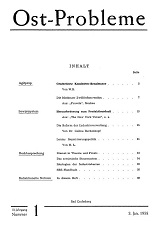
REVIEWS OF: Fritz Löwenthal: Das kommunistische Experiment. Theorie und Praxis des Marxismus-Leninismus. 280 pp. Markus Verlag, Cologne 1957 // Franklyn D. Holzman: Soviet Taxation. The Fiscal and Monetary Problems of a Planned Economy. 376 pp. Harvard University Press, Cambridge (Mass.) 1955 // Reinhard Bendix: Work and Authority in Industry. Ideologies of Management in the Course of Industrialization. XXXII and 466 pp. John Wiley & Sons, New York 1956.
More...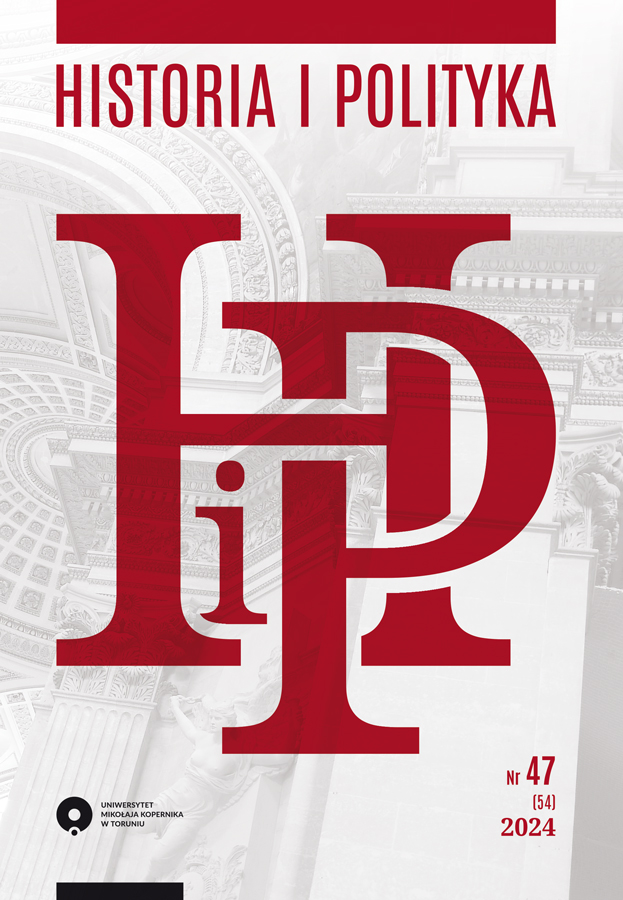
Taking power in Poland after World War II, the communists could count on the support of only a small part of Polish society. In this situation, it was indispensable to resort to social engineering activities, which were to encourage Poles to sup-port the new authorities and the system associated with it. They were carried out on various levels, from propaganda, through manipulation, to phys-ical repression. All major events and campaigns carried out by the communists in Poland in the years 1944–1948 had a sociotechnical dimension: the establishment of the Polish Committee of National Liberation, the celebration of national holidays, the so-called people’s referendum ’46, the elections to the Legislative Sejm ’47, or the “unification” of the workers’ movement. A com-prehensive look at the indicated period leads to the conclusion that Polish society was then subjected to total social engineering
More...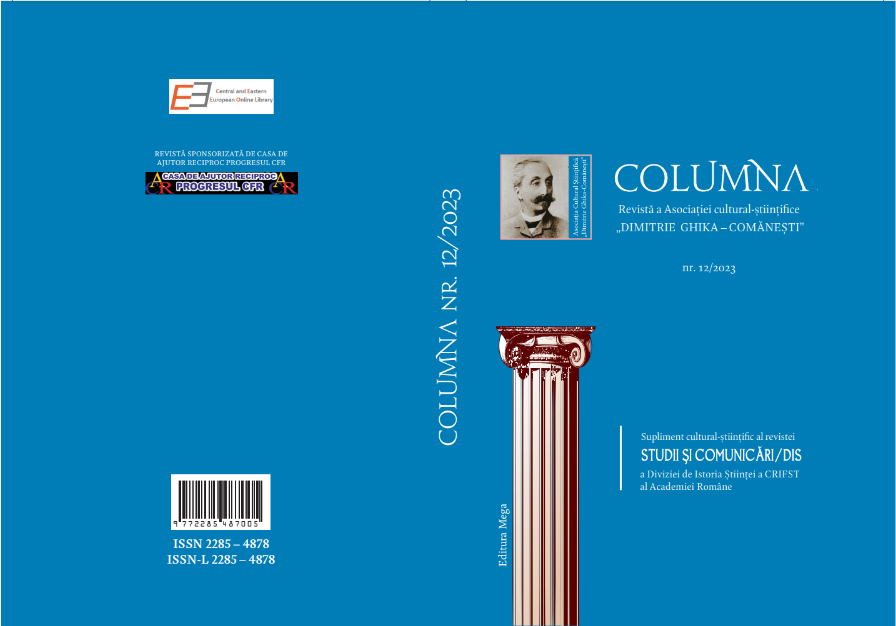
Even since its foundation in August 1948, the General Directorate for the Security of the People had among its attributions the repression of the armed resistance movements. The first operation against the armed groups, was gathering information of them, the possibility of catching the resistance’s members being initially postponed. The fundamental element in the elimination of the armed resistance by part of the Securitate consisted in the expansion and qualitative improvement of the informative network in areas where the partisans acted, preoccupations regarding its improvement and expansion seeming a recurrent subject in the epoch’s documents drawn up by the repression organs. In order to destroy the groups, they also used undercover informers and officers who recommended themselves as being refugees prosecuted by the Securitate. The political police also got information consequently to the captures and further interrogations of the resistance members, as their interrogation took place in such a manner so that they could ascertain who their accomplices were, where they had taken the weapons from and where these were stored, who the persons were who helped them, if there were any connections between various partisan groups or between them and the ex-political parties, priests and Romanian who had left the country etc. Another method used by Securitate consisted in discrediting the members of the groups from the mountains in front of population and the supporting elements in order to reduce the partisan’s information and supply possibilities. The main way of capturing and destroying the ‘armed antirevolutionary gang’ was the massive use of the Security Troops.
More...